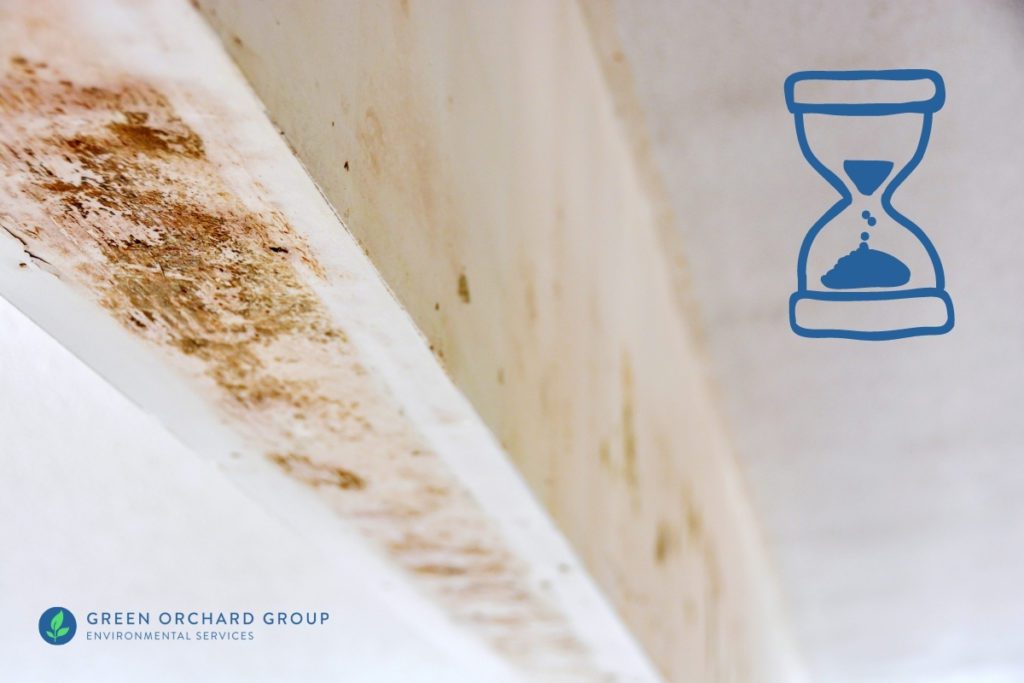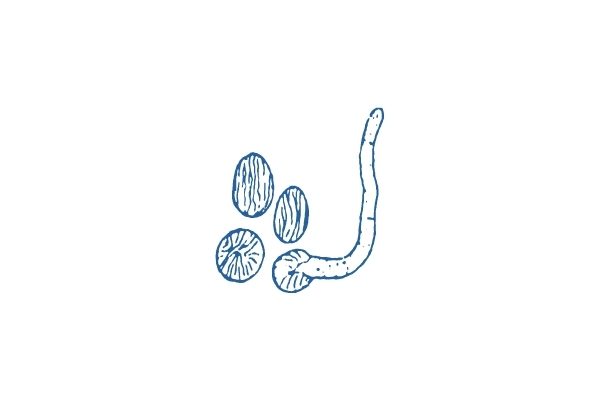
Unchecked moisture and humidity can lead to mold problems in your home or building. But how long does it take for mold to grow and what can you do to stop it?
Under ideal conditions, mold can start to grow within the first 24 to 48 hours. However, visible signs of mold may not appear until days or weeks later.
That’s why it’s important to thoroughly dry your home and address any water damage immediately after a leak or flood.
How Long Does It Take for Mold to Grow?
The rule of thumb for mold growth, according to FEMA, is that mold begins to grow within 24 to 48 hours.
But this doesn’t mean you’ll see it right away. At this point, the microscopic mold spores that have just started to germinate are invisible to the naked eye. In fact, most signs of mold typically start to appear around 18 to 21 days later.
This is one of the reasons why mold can be such a headache for homeowners and building owners. By the time mold growth reaches this stage, the work required to remediate can be costly and extensive.
By understanding the life cycle of household mold and how long it takes to grow, you may be able to take preventative action to detect and eliminate mold earlier.
1. Mold Spores Germinate after 24 to 48 Hours

- Not yet visible
- Dry and clean the area thoroughly with diluted bleach
A small amount of dormant mold spores is normally present in the air around us, even inside your home. In this dormant state, these microscopic mold spores are harmless and invisible to the naked eye.
But in the presence of moisture, spores begin to germinate — in other words, they activate and start growing.
You can think of mold spores as tiny seeds. If you give them water, they’ll sprout into seedlings. This process is called germination, and for mold spores it usually happens within the first two days of water damage.
After the water damaged area has been thoroughly dried, cleaning the affected surfaces with a diluted bleach solution is effective at eliminating these newly germinated mold spores and preventing further growth.
Because germinating mold spores are too small to see, they’re easy to miss during cleanup and repair. That’s why it’s important to be as thorough as possible in the immediate 24 to 48 hours after a leak or flood has occurred.
2. Hyphae Start Growing after 3 to 12 Days

- Not yet visible
- Starts to penetrate into surfaces
- Use aggressive mold cleaners with appropriate safety precautions
After mold spores have germinated, they begin to grow hyphae — thin cellular strands that look like roots. Each strand is only around 3 to 6 µm in diameter (or 0.0003 to 0.0006 cm) and grows at a rate of 1.5 mm per day.
Hyphae push their way out of the spore and penetrate into porous organic materials like drywall, wood, ceiling tiles, insulation, and carpets. They decompose and absorb nutrients from the surrounding matter to feed the growing mold, while releasing volatile organic compounds (mVOCs) into the air.
This process can begin in as few as 3 days or it may take up to 12 days, depending on the species of mold and the specific room conditions (e.g. amount of moisture, ambient temperature, surface material).
At this point, the newly grown hyphae are still too small to see.
Once hyphae have “rooted” themselves in, they can no longer be easily removed from surfaces by cleaning them with diluted bleach or other surface disinfectants. Household bleach and disinfectant solutions only kill the outermost layer of mold and may not reach the hyphae underneath, allowing it to regrow.
At this point, more aggressive mold cleaning products might be required for nonporous surfaces (drywall, wood, etc.) that were not thoroughly cleaned within the first 24 to 48 hours. These products typically use active ingredients like hypochlorite or hydrogen peroxide together with a surfactant to help loosen up embedded hyphae.
3. Mycelia Becomes Visible after 18 to 21 Days

- Visible mold patches/colonies
- Mold odor and symptoms may be apparent
- Porous materials with visible mold should be discarded
- Contain the affected area and wear personal protective equipment
As hyphae grow in numbers, they form a mass of interconnected strands called the mycelium — this is the fuzzy or slimy patch that you now see growing on your wall or ceiling.
Mold is only visible once the mycelium has formed, which usually takes between 18 to 21 days. Again, this can vary depending on the species and conditions.
New spores are produced at the ends of hypha cells, which are dispersed into the air. High concentrations of spores and mVOCs produced as a byproduct of metabolism will worsen allergies and asthma, and may cause a variety of other symptoms such as headaches, respiratory problems, and eye irritation.
At this stage, if not treated immediately, mold can cause major structural damage to the materials it grows on. The musty, earthy, or rotting odor will also become more apparent.
Once mycelia have formed and mold is visible, all contaminated materials must be removed. Hard, nonporous materials like steel and rigid insulation can be reinstalled after drying and disinfecting. However, porous materials like drywall, ceiling tile, wood, cardboard, and upholstery must be discarded once mold has developed.
When cleaning or removing visible mold, always wear gloves, an N-95 respirator, and goggles. Make sure that the area is well ventilated and use a HEPA vacuum to remove dust and debris to prevent spores from spreading.
Improper repair work or cleaning can cause mold debris, spores, and mVOCs to spread through the air, so exercise caution. If the total size of the moldy area is larger than 10 square feet, you should use a licensed professional to handle the remediation.
Professional Mold Inspection & Removal in NYC
Green Orchard Group is a leading environmental health and safety firm in New York City, with over 25 years of experience helping New Yorkers find and eliminate mold.
We perform comprehensive mold assessments with moisture sensors and infrared cameras to detect any hidden mold growth, which may occur inside walls and beneath floorboards. Mold sampling and testing may be used to detect the presence of mold at earlier stages.
If mold is found, our licensed experts will help you remove the mold, address the source, and clean or repair damaged structures. We are also available to do emergency water extraction, drying, and humidifying after an unexpected leak or flood.
Learn more about our mold inspection, remediation, and removal services here or call (212) 218-8261.
